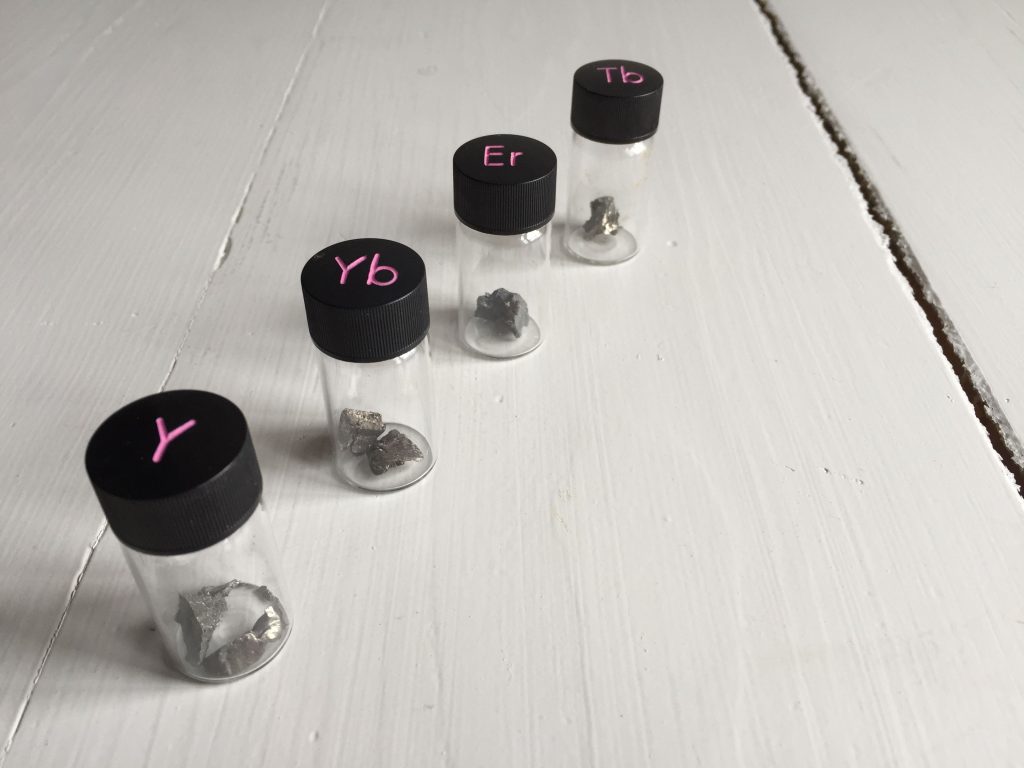
For a long time there was no use for the newly discovered RE metals (RE=rare elements) and thus there was no commercial extraction of them either. It is only at the end of the 19th century that the Austrian Carl Auer succeeds in improving the gas lamps of the time with the help of glow plugs made of RE metals.
Since then, countless highly specialized applications have been developed and the metals are now used, for example, in semiconductor technology, as dyes in glazes, as protective filters in microwave ovens, in batteries and as components in alloys.
You probably have ytterbium fluoride in your dental fillings!
In 1987, the Nobel Prize in Chemistry went to the developers of superconductor technology, where an yttrium oxide proved to be superconducting at high temperatures.
However, no extraction of RE metals has ever occurred in Ytterby.
Up until about 1950, India and Brazil accounted for the majority of all production of these, before South Africa took over this role. Between 1960 and 1980, it was from California that the majority of all rare earth metals originated, after which China came to account for the majority of all production. China has since had the dominant role without any competition whatsoever, and currently accounts for between 95 and 97 percent of global production.
The strategic importance of the earth metals became clear in 2010 when China, as pressure in a border dispute, blocked the export of the metals to Japan.
In Sweden, mining is planned in Norra Kärr near Gränna, where the world’s fourth largest deposit is estimated to be located.
The RE metals are not as rare as their names suggest. They are, for example, far more common in the earth’s crust than both gold and silver. However, they are technically very difficult to extract as they are found in relatively low concentrations. This is also why the environmental problems of enrichment are considered difficult.